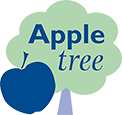14 ways how to optimise your website’s index page
A question from LinkedIn presented this subject, and I duly responded with these following points. They are in no particular order, just as they came out of my head. This information is stuff I have been gleaning for years, from observation, reading books, blogs and articles, and from my own personal realisation. Someday I may write a fuller post on some of these subjects, but meanwhile I was glad of the chance to list them:
1. Make it as simple as possible to understand your business and what it is about.
2. Your homepage should act as a signpost to other areas of your website.
3. There should be two functions: directions to go into the wesbite or sign up for a newsletter or similar database.
4. It should download instantly without oversized graphics and inappropriate animations that divert the attention or irritate the visitor.
5. The copy should be clear, jargon free and instantly readable. It should contain the keywords present in the metatags for consistency and relevance.
6. The headline, placed at the top, should be in a H1 tag, and the page title should include the keywords your visitors are most likely to search for.
7. The layout should include sidebars to hold call to actions, the left one for instant reactions like sign up forms, the right one for links to resources elsewhere.
8. If you’re a business, remember to put your telephone number clearly at the top, along with a link to your email address or contact page.
9. Don’t over-clutter your commands, simplicity is more likely to succeed in positive action.
10. Don’t have an oversized banner that takes up all the space on the page for laptops without big screens. The message or recognition point of your website should be placed in an obvious position.
11. Make your link tabs or button graphics look like they can be clicked on, with an obvious reaction when they are.
12. Don’t forget to mention the most important keyword in the headline and in the first sentence – for both spider and human use.
13. Maintain these concepts with all your pages! One topic per page, don’t over-clutter or confuse with too much information.
14. If you want to explain things in more detail, use a blog!
If there are any I’ve missed, drop us a comment to let us know!





